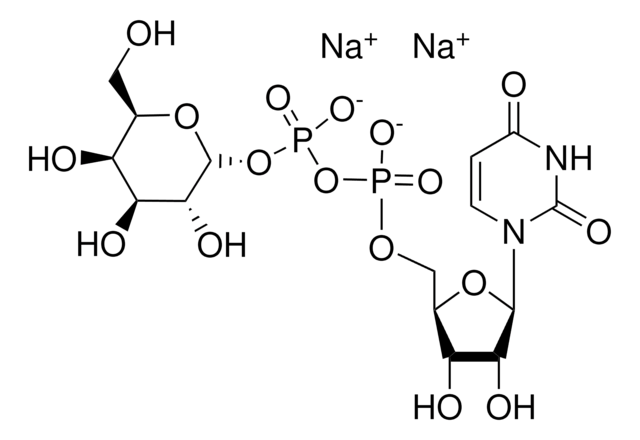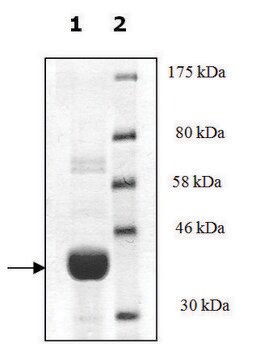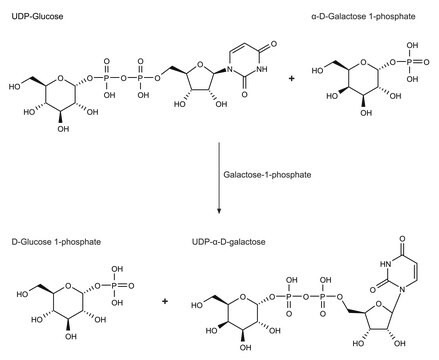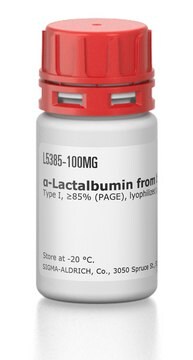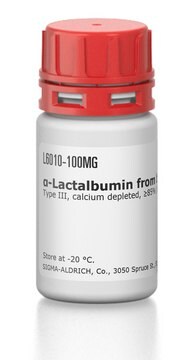G5507
Galactosyltransferase from bovine milk
lyophilized powder
Sinónimos:
Lactose Synthase, UDP-galactose:D-glucose 4-β-galactosyltransferase
About This Item
Productos recomendados
formulario
lyophilized powder
Nivel de calidad
actividad específica
3.0-15.0 units/mg protein (in the presence of adequate α-lactalbumin, without added α-lactalbumin the activity is zero)
composición
Protein, 35-65% modified Warburg-Christian
impurezas
≤10 % protein α-lactalbumin
temp. de almacenamiento
−20°C
¿Está buscando productos similares? Visita Guía de comparación de productos
Descripción general
Aplicación
- in the generation of hyper-galactosylated variant of IgG1
- in β -1,4-galactosyltransferase assay rice root cell extracts
- in the modification of LacNAcQ11 and LacDiNAcQ11 nanofibers
Acciones bioquímicas o fisiológicas
Ligadura / enlace
Definición de unidad
Forma física
Código de clase de almacenamiento
11 - Combustible Solids
Clase de riesgo para el agua (WGK)
WGK 3
Punto de inflamabilidad (°F)
Not applicable
Punto de inflamabilidad (°C)
Not applicable
Equipo de protección personal
Eyeshields, Gloves, type N95 (US)
Certificados de análisis (COA)
Busque Certificados de análisis (COA) introduciendo el número de lote del producto. Los números de lote se encuentran en la etiqueta del producto después de las palabras «Lot» o «Batch»
¿Ya tiene este producto?
Encuentre la documentación para los productos que ha comprado recientemente en la Biblioteca de documentos.
Los clientes también vieron
Artículos
Glycosyltransferases were initially considered to be specific for a single glycosyl donor and acceptor, which led to the one enzyme-one linkage concept. Subsequent observations have refuted the theory of absolute enzymatic specificity by describing the transfer of analogs of some nucleoside mono- or diphosphate sugar donors.
Nuestro equipo de científicos tiene experiencia en todas las áreas de investigación: Ciencias de la vida, Ciencia de los materiales, Síntesis química, Cromatografía, Analítica y muchas otras.
Póngase en contacto con el Servicio técnico
